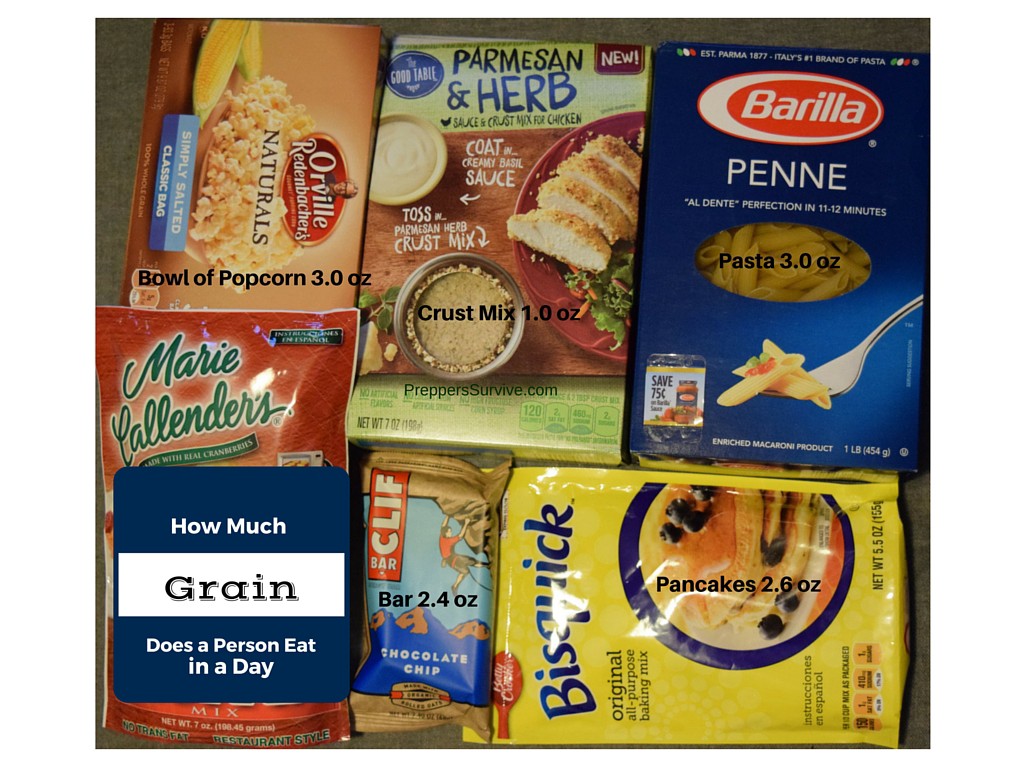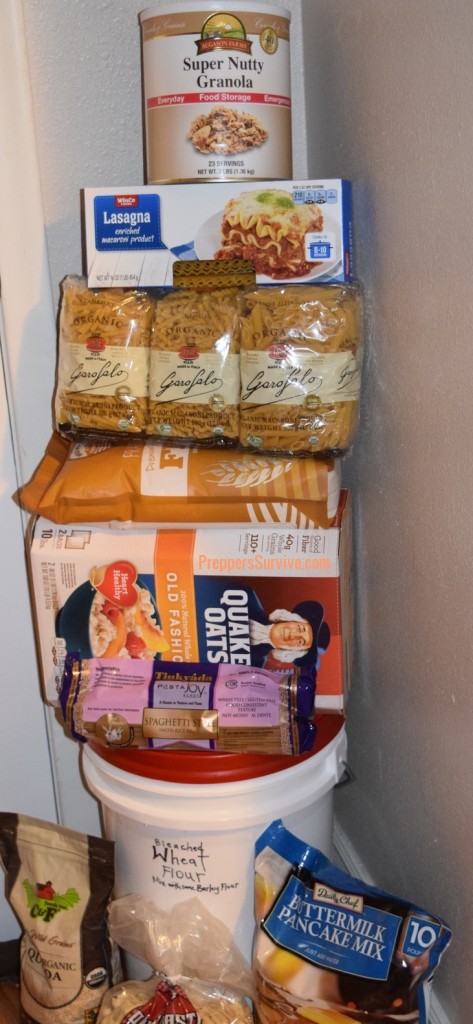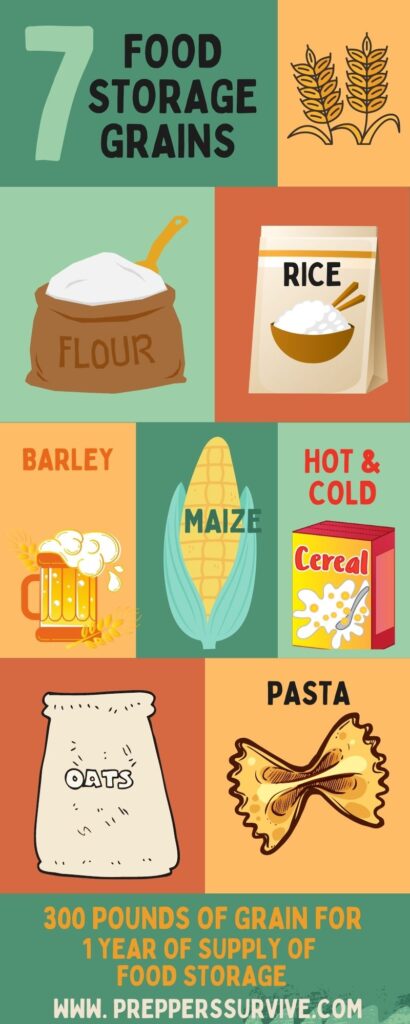
The news has recently been filled with alarming predictions on food shortages which begs the question, “how much grain should I store to hedge against food shortages”? Check out these news articles: Russia and Ukraine export up to 30% of the world’s wheat, shortages imminent as the war continues! Another example, Global food prices at a 30% increase from last year. Also, China Hoarding Grains! They are buying up 60% of the global rice crop and 51% of its wheat! These factors are bound to affect the availability and price of grain. So it’s time to double-check your food storage for grains!
Grain is a vital source of nutrients. It has minerals, vitamins, fiber, protein, and antioxidants, all of which are the building blocks for good health and energy. Its superpower is making you feel full. Studies have also shown that whole grains aid the body in reducing depression symptoms. These benefits are so important, especially in times of scarcity.
How Much Grain Should I Store

I received an email from one of my readers asking if there may have been a typo on one of my food storage lists. He said, “I really appreciate your site and info, but I am a little confused with the amount of grain you suggest, for example:
Minimum: 30 lbs of grain per person per month.
Total family members ____x 30 =_____ x by ____ months supply =______lb”.
He went on to say, “This appears to be a huge supply. I don’t know anyone that would eat 30lbs of grain in a month.”
I appreciated the question and remembered having the same question when I first started with food storage.
There are many different opinions out there, and I say ‘opinions’ because only you can determine the right amount. With that being said, here’s how I decided what was suitable for my family.
How Much Grain Does 1 Adult Eat in a Day
When I began prepping, I researched food storage and how much I wanted to store for my family. One of the first steps was to track how much grain I ate daily. Here is a breakdown of one day:
2.6 oz Breakfast – Pancake Mix (makes two pancakes)
2.4 oz Snack – Cliff Granola Bar
4.0 oz Lunch – Homemade Bread Mix for a Sandwich
1.0 oz Dinner – Crust Mix for Chicken
3.0 oz Dinner – Pasta Noodles
3.0 oz Snack – Popcorn Kernels
– – – – – – – – – – – – – – – – – – –
= 16 oz or 1 lb of grain

After tracking my eating habits, I determined that I eat, on average, one pound of grain a day. It comes out to be 30 lbs a month or 360 lbs a year. How much grain should I store? I should be storing 120 – 160 lbs of grain for a one-month supply to feed my family of four. I realize that my family’s eating habits will change when hard times hit, and we will be more frugal with our rations. However, it’s important to have a little extra grain to barter with for items like fruit, veggies, milk, eggs, and meat.
Goal:
- Gather three days of quick and easy meals for your family and place them in an emergency kit. In the event of a power outage, these supplies are for an emergency situation where you would need to evacuate your home or for a power outage.
- Gather a one-month supply of grains (30 lbs per family member).
- Continue adding to your food storage with a variety of grains, and set a goal for how much your family wants to have on hand.
“We can face the trials of life with increased confidence, peace in our hearts, and like Joseph in Egypt, we will be able to say, even in stressful circumstances, “There was bread“.”
Storing Grains
Buying a sack of flour from the store will last a couple of years. The shelf life of your grains can be greatly extended by sealing them in a food-grade bucket inside a Mylar bag with oxygen absorbers. This method, done properly, can not only increase the shelf life of your grains by approximately 20 years but can protect them from bacteria and insects. Storing grains in dry, cool places will also help to extend their shelf life.
For long-term food storage, I try to buy whole grain that has not been milled or cracked. The outer shell of the whole grain helps to protect the inner nutrients and prolongs storage life. “Whole grains contain 3-5 times the vitamins and minerals found in refined grains.”
The Most Valuable Grains
- Rice
- Maize (corn)
- Wheat
- Barley (use a lot for beer)
- Oats
- Sorghum
- Rye
- Millet
What Grains to Store

It is wise to have a variety of grains in your food storage. Our bodies need a wide range of nutrients, and we are used to eating an assortment of foods. We can develop a dislike, an intolerance, or an allergy to a food we eat exclusively.
I learned how good whole wheat was for the body many years ago, so I switched my bread and pasta to whole wheat instead of white. Within a few months, I would get diarrhea, stomach cramps, body aches, and my skin would get itchy every time I ate the smallest amount of wheat. I’ve been living a gluten-free lifestyle ever since. My sister took an allergy test and found out that she has a corn sensitivity. Now that she removed corn from her diet, she feels healthier and has fewer digestive issues.
Having several different types of grain is just a good idea. Currently, there are so many options available to use. So make use of the current grain abundance before these items get hard to find or too expensive to buy.
Here’s a list of grains to consider for your food storage:
Pancake Mix – wheat flour (waffles, pancakes, muffins, coffee cake)
Gluten Free Pancake Mix – brown & white rice flour
Grits – creamy ground corn hot cereal
Buckwheat – creamy buckwheat hot cereal
Gluten Free Bread or Bread Mix
Gluten-free Baking Flour – brown & white rice
Masa Corn Flour (corn tortillas)
Maize Corn Flour (corn bread, corn cakes)
Rice – basmati, brown, jasmine, long-grain white, risotto, sticky, wild
Pasta Noodles – spaghetti, elbow, shell, penne, fettuccine, rotini, lasagna
Quinoa – white, red, black, rainbow
How much grain should I store? It is ultimately up to you and the eating habits of your family. Just track your weekly eating habits of grain to determine what is right for you.

Related Article: Photos of Prepper’s Food Storage Pantries
Thanks for visiting Preppers Survive. If you enjoyed this article, how much grain should I store, please share it on your favorite social media and vote for Preppers Survive here.

Article Rewritten. Originally Published: March 8, 2016


Thank you for the information
We’re in the process of stocking up grains as I write this. Our biggest issue right now is space. We don’t live in a large home and what space we do have is covered with already preserved foods. We are turning our pantry into a room where I can store all my cooking gadgets to free up some room in the kitchen and our next big project AFTER the garden is to gut out the basement and turn it into a supply room.
Yes, space can be a real challenge. Hopefully, you’ll write an article about the solutions you’ve found and I’ll think about doing the same:) Good luck on your projects!
Good to know about the grains to store, makes sense to us. We are now looking to buy a bread maker and would appreciate any suggestions, and cautions, about what bread maker to choose, or avoid.
Gary and Carol